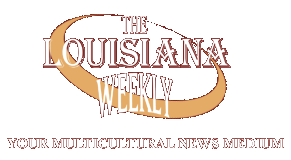Heroin overdoses a major concern in Jeff. Parish
16th September 2014 · 0 Comments
Jefferson Parish Coroner Jerry Cvitanovich said recently that the parish is on track to exceed the 66 fatal heroin overdoses recorded in 2013, with 45 deaths already on the books this year.
Nola.com/The Times-Picayune reported that the number mirrors trends nationwide and reflects heroin’s increased availability and cheaper cost.
Health authorities say users have turned to heroin in the wake of a crackdown on prescription drugs.
Though cocaine remains Louisiana’s biggest drug threat, heroin moved up to second place last year, bypassing even prescription drugs. That’s according to Donald Petty of the Gulf Coast High Intensity Drug Trafficking Areas program.
Petty says the profile of heroin abusers has changed from the 1950s and ’60s, when it was found in inner cities and poorer neighborhoods. Now, he says, it is a suburban problem.
A story that ran on June 2, 2014 in The Louisiana Weekly also talked about the changing face of heroin users.
A nationwide survey found that heroin users are attracted to the drug not only for the “high” but because it is less expensive and easier to get than prescription painkillers, Medicalxpress.com reported.
Researchers at the Washington University School of Medicine in St. Louis published the survey’s results May 28 in the journal JAMA Psychiatry.
“In the past, heroin was a drug that introduced people to narcotics,” said principal investigator Theodore J. Cicero, Ph.D. “But what we’re seeing now is that most people using heroin begin with prescription painkillers such as OxyContin, Percocet or Vicodin, and only switch to heroin when their prescription drug habits get too expensive.”
Cicero and his colleagues analyzed data gathered from more than 150 drug treatment centers across the U.S. More than 9,000 patients dependent on narcotic painkillers, or opioids, completed the surveys from 2010 to 2013. Of those, nearly 2,800 identified heroin as their primary drug of abuse.
The researchers listed three key factors in the decision to use heroin: accessibility, including lower cost; enjoyment of the high; and the ease with which the drug could be snorted or injected. To gather additional information about heroin users, the researchers zeroed in on 54 patients who participated in unstructured interviews about drug use.
“The price on the street for prescription painkillers, like OxyContin, got very expensive,” Cicero said. “It has sold for up to a dollar per milligram, so an 80 milligram tablet would cost $80. Meanwhile, they can get heroin for $10.”
In 2010, the often-abused prescription painkiller OxyContin was reformulated to make the pills more difficult to crush or dissolve. In a 2012 letter to The New England Journal of Medicine, Cicero noted that the reformulation had made it more difficult for users to snort or inject OxyContin but that the change had led some users to switch to other drugs, including heroin.
“If you make abuse-deterrent formulations of these drugs and make it harder to get high, these people aren’t just going to stop using drugs,” said Cicero, a professor of neuropharmacology in psychiatry. “As we made it more difficult to use one drug, people simply migrated to another. Policymakers weren’t ready for that, and we certainly didn’t anticipate a shift to heroin.”
Medicalxpress.com reported that heroin users are older—23, on average—when they first try the drug. Most got high with prescription drugs acquired illegally before switching to heroin. They tend to live in suburban or rural areas rather than the inner city, and more than 90 percent of the study subjects who began using heroin in the past decade are white.
Previous research had reported that in the 1960s and 1970s, more than 80 percent of heroin users were young males of color who lived in inner cities and began using the drug at about age 16.
“Our earlier studies showed that people taking prescription painkillers thought of themselves as different from those who used heroin,” Cicero said. “We heard over and over again, ‘At least I’m not taking heroin.’ Obviously, that’s changed.”
Cicero said it’s surprising that a drug like heroin is becoming more acceptable in suburban and rural settings. But he believes that more studies of people in treatment programs may shine light on the problem.
“The overdose deaths and hospitalizations are symptoms of a problem that we really need to deal with,” he said. “You can’t effectively treat people or prevent addiction unless you know why they are taking drugs, and we don’t really have a handle on that yet. Unfortunately, the problem with heroin is it’s the most powerful opiate ever created, and even if people think they are being careful, it can kill.”
Since law enforcement agencies and health officials in many major U.S. cities have identified a rise in the sale and use of heroin as a major factor in the rise of gun violence and health challenges, the survey has major implications for Americans living in areas that once appeared to be safe from the perils of the illegal sale and use of drugs like crack cocaine and heroin. Health and government officials who have valiantly fought to get a handle on the illegal use and sale of OxyContin will now have to wage a battle against heroin use in America’s suburbs and rural areas.
Even though heroin use has become a “suburban problem,” at least one public official pointed a finger at New Orleans, saying that the city has gone from its former status as a city overrun with heroin users to become a “distribution center” for heroin users in the surrounding parishes. Despite national trends that show exponential growth in the use of heroin in suburbs and rural areas across the U.S., several officials continue to blame Hurricane Katrina for spreading heroin use to the suburbs surrounding New Orleans.
“What’s interesting about all of this is how the approach to tackling drug use has changed now that the new face of heroin users is white,” Ramessu Merriamen Aha, a New Orleans businessman and former congressional candidate, told The Louisiana Weekly last week. Communities of color have been clamoring for more funding for drug prevention and treatment programs for decades but those pleas have mostly falling on deaf ears. Instead of help and approaching drug addiction like a sickness, we’ve been hit with a ‘War on Drugs’ that only made things worse and criminalized what is essentially an illness.
“Now we are hearing public officials from surrounding parishes asking for the same kind of help we’ve been asking for in New Orleans and other large cities for decades,” he continued. “It’s just another example of how race trumps compassion and old-fashioned common sense.”
This article originally published in the September 15, 2014 print edition of The Louisiana Weekly newspaper.



